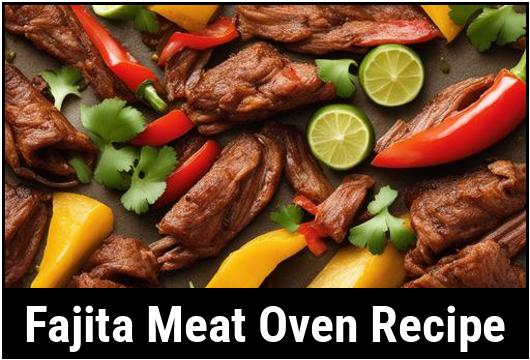
The Ultimate Guide To Fajita Meat In The Oven
If you’re a fan of Tex-Mex cuisine, then you’ve probably enjoyed the sizzling plate of fajitas at your favorite Mexican restaurant. But did you know that you can recreate that deliciousness right at home? In this comprehensive guide, we’ll take a deep dive into fajita meat cooked using an oven. From understanding the food science behind cooking fajita meat to selecting the right cut of meat, cleaning, preparing, and crafting the perfect recipe, we’ll cover it all. So put on your apron and get ready to embark on a mouthwatering journey!
Understanding the Food Science
Before we dive into the nitty-gritty of cooking fajita meat in the oven, it’s important to understand the food science behind it. Fajita meat, typically made from beef or chicken, needs to be cooked at high heat to achieve that juicy and tender texture. The oven serves as a perfect tool to attain the desired charred yet succulent meat. However, it’s crucial to note that the type of cut you choose will influence the final result.
Selecting the Perfect Cut
When it comes to fajita meat, selecting the right cut is key. For beef fajitas, cuts like skirt steak or flank steak work best. These cuts have a good amount of marbling and connective tissue, which adds flavor and tenderness. On the other hand, chicken breast or boneless thighs are excellent choices for chicken fajitas. Their lean yet tender meat pairs beautifully with the marinade and spices.
Cleaning and Preparing the Meat
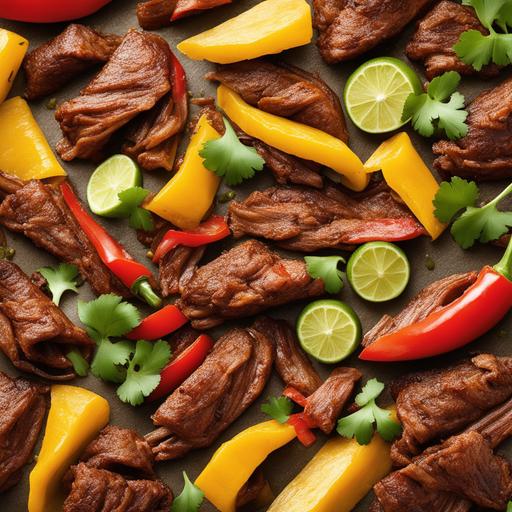
Now that you’ve chosen your cut of meat, it’s time to clean and prep it for cooking. Start by placing the meat on a clean cutting board and trim any excess fat. This will prevent flare-ups in the oven and ensure even cooking. Next, rinse the meat under cold water and pat it dry with paper towels. Properly cleaning the meat helps remove any surface impurities and allows the marinade to penetrate effectively.
Marinade and Seasoning Tips
One of the secrets to mouthwatering fajita meat lies in the marinade and seasoning. A classic fajita marinade typically consists of lime juice, soy sauce or Worcestershire sauce, garlic, cumin, chili powder, and a touch of sugar. However, don’t be afraid to get creative with your own flavor combinations. The tanginess from the lime juice tenderizes the meat, while the spices infuse it with an explosion of flavors.
Allowing the Flavors to Develop
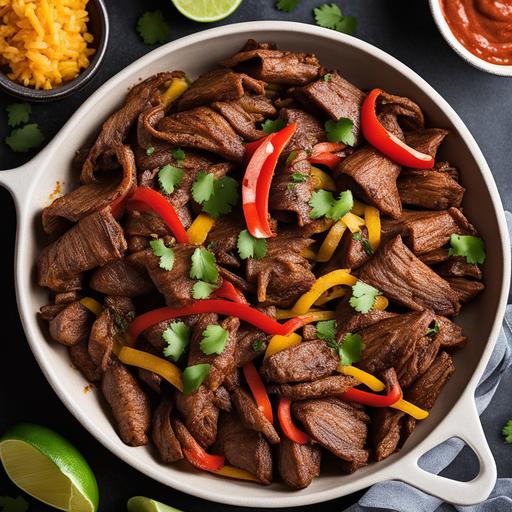
After you’ve prepared the marinade, it’s time to let the meat soak in all those wonderful flavors. Transfer the meat to a resealable plastic bag and pour the marinade over it. Ensure that the meat is well-coated and massage it gently to evenly distribute the marinade. Seal the bag tightly and let it marinate in the refrigerator for at least 2 hours, or ideally overnight. This allows the flavors to penetrate the meat thoroughly and ensures a tender and flavorful outcome.
Preheating and Temperature Checks
Once the meat has marinated to perfection, it’s time to preheat your oven. Set it to a high temperature of around 450°F (230°C) to get that nice charred exterior. While the oven is preheating, it’s essential to check the meat’s internal temperature using a meat thermometer. For medium-rare steak fajitas, aim for an internal temperature of 130°F (54°C). Chicken fajitas should have an internal temperature of 165°F (74°C) to ensure they are safely cooked through.
Cooking in the Oven
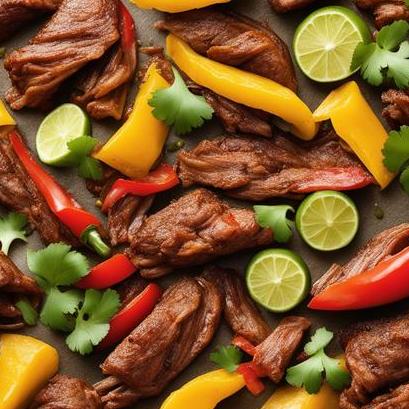
Now that your oven is preheated and the meat is properly marinated and seasoned, it’s time to cook the fajita meat. Lay the marinated meat in a single layer on a baking sheet lined with aluminum foil or a greased oven-safe dish. This allows for easy cleanup and prevents sticking. Place the sheet or dish in the preheated oven and let the meat cook for approximately 10-15 minutes, or until it reaches the desired doneness. However, be sure to keep a close eye on the meat to prevent overcooking and drying out.
Achieving the Perfect Doneness
To ensure that your fajita meat is cooked to perfection, it’s essential to understand the different doneness levels for beef or chicken. For beef fajitas, medium-rare is the most popular choice, with the meat having a warm pink center. However, if you prefer your beef cooked to medium, aim for an internal temperature of around 140°F (60°C). For chicken fajitas, it’s crucial to cook them until the internal temperature reaches the recommended 165°F (74°C). This guarantees that the chicken is cooked all the way through, avoiding any risk of foodborne illnesses.
Avoiding Overcook or Undercook
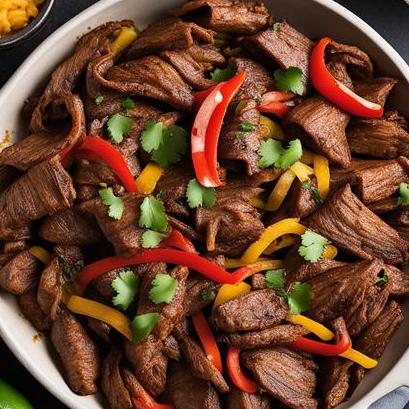
One of the biggest challenges when cooking fajita meat in the oven is achieving the perfect balance between overcooking and undercooking. Overcooking the meat can result in dry and tough fajitas, while undercooking can lead to unappetizing raw or chewy meat. To avoid these pitfalls, it’s essential to closely monitor the meat’s internal temperature using a meat thermometer. Additionally, keeping a close eye on the cooking time and adjusting it based on your oven’s characteristics will help you achieve the desired results.
Serving and Enjoying Fajita Meat
Once the fajita meat is cooked to perfection, it’s time to serve and enjoy your delectable creation. Transfer the meat to a serving platter and allow it to rest for a few minutes. This allows the juices to redistribute throughout the meat, ensuring maximum flavor and tenderness. Serve the fajita meat alongside warm tortillas, sautéed peppers and onions, guacamole, pico de gallo, and sour cream. Don’t forget to garnish with a squeeze of lime juice and some fresh cilantro for that extra burst of freshness and color.
Recipe: Oven-Baked Steak Fajitas
To bring everything together, let’s explore a tried and tested recipe for oven-baked steak fajitas:
Ingredients:
-
1.5 lb (680g) skirt steak, thinly sliced
-
1 red bell pepper, sliced
-
1 green bell pepper, sliced
-
1 yellow bell pepper, sliced
-
1 onion, sliced
-
3 tablespoons olive oil
-
3 cloves garlic, minced
-
Juice of 2 limes
-
2 tablespoons soy sauce
-
1 tablespoon chili powder
-
1 teaspoon ground cumin
-
1 teaspoon paprika
-
Salt and pepper to taste
-
Tortillas, for serving
-
Optional toppings: guacamole, pico de gallo, sour cream, lime wedges, fresh cilantro
Instructions:
-
In a large resealable plastic bag, combine the olive oil, minced garlic, lime juice, soy sauce, chili powder, ground cumin, paprika, salt, and pepper. Mix well.
-
Add the sliced skirt steak to the bag and massage it gently to ensure it’s well coated in the marinade. Seal the bag tightly and refrigerate for at least 2 hours or overnight.
-
Preheat your oven to 450°F (230°C). Prepare a baking sheet by lining it with aluminum foil or greasing a oven-safe dish.
-
Remove the marinated steak from the bag and place it in a single layer on the baking sheet or dish. Arrange the sliced bell peppers and onions around the meat.
-
Place the baking sheet or dish in the preheated oven and cook for approximately 10-15 minutes, or until the meat reaches the desired doneness.
-
Once cooked, remove the fajita meat from the oven and allow it to rest for a few minutes. This helps ensure maximum flavor and juiciness.
-
Serve the oven-baked steak fajitas with warm tortillas and your favorite toppings, such as guacamole, pico de gallo, sour cream, lime wedges, and fresh cilantro.
Variations and Tips
While the recipe we’ve covered is a classic steak fajita preparation, feel free to experiment with different variations. You can substitute the skirt steak with flank steak, or even try chicken breast or shrimp for a delightful twist. Additionally, you can add your favorite spices or herbs to the marinade to infuse different flavors into the meat.
Here are some additional tips to ensure your oven-baked fajita meat turns out perfect every time:
-
Don’t overcrowd the baking sheet or dish. Leaving enough space around each piece of meat ensures even browning and prevents steaming.
-
If preferred, you can quickly sear the marinated meat in a hot skillet before transferring it to the oven for extra caramelization and flavor.
-
For a smoky twist, you can add a pinch of chipotle powder or smoked paprika to the marinade.
-
Experiment with different toppings and dips to further enhance your fajita experience. Salsa verde, sliced jalapeños, or even melted cheese can take your fajitas to the next level.
With this comprehensive guide at your fingertips, you’re now equipped to master the art of making fajita meat in the oven. So gather your ingredients, follow the steps closely, and get ready to enjoy a sizzling plate of homemade fajitas that will rival even the best Mexican restaurants. Happy cooking!
FAQS On Fajita Meat Oven Recipe
How Long Does It Take To Cook Fajita Meat In The Oven?
The cooking time for fajita meat in the oven varies depending on the size of the meat and the desired doneness. As a general rule, a pound of fajita meat takes about 12 to 15 minutes to cook at 400 degrees Fahrenheit. However, always use a meat thermometer to ensure that the internal temperature of the meat reaches 165 degrees Fahrenheit.
What Kind Of Meat Is Used For Fajitas?
Typically, skirt steak or flank steak is used for fajitas. These cuts of beef are known for their flavor and tenderness. However, other cuts of beef such as sirloin or ribeye can also be used depending on your preference and availability.
Do I Need To Marinate The Meat Before Cooking?
Marinating the meat before cooking is recommended to add flavor and tenderize the meat. A simple marinade can be made by combining lime juice, garlic, cumin, salt, and pepper. The meat should be marinated for at least 30 minutes before cooking, but can also be marinated for several hours or overnight.
Can I Cook Vegetables With The Fajita Meat In The Oven?
Yes, you can cook vegetables with the fajita meat in the oven. Sliced peppers and onions are traditional vegetables used in fajitas and can be cooked alongside the meat. Toss the vegetables with some oil and seasonings and arrange them around the meat on a baking sheet before cooking.
How Should I Slice The Fajita Meat After It Is Cooked?
To ensure that the fajita meat is tender and juicy, it should be sliced against the grain. Look for the lines on the meat and cut perpendicular to them. This will help to break up the muscle fibers and make the meat easier to chew. Slice the meat thinly for fajitas.


